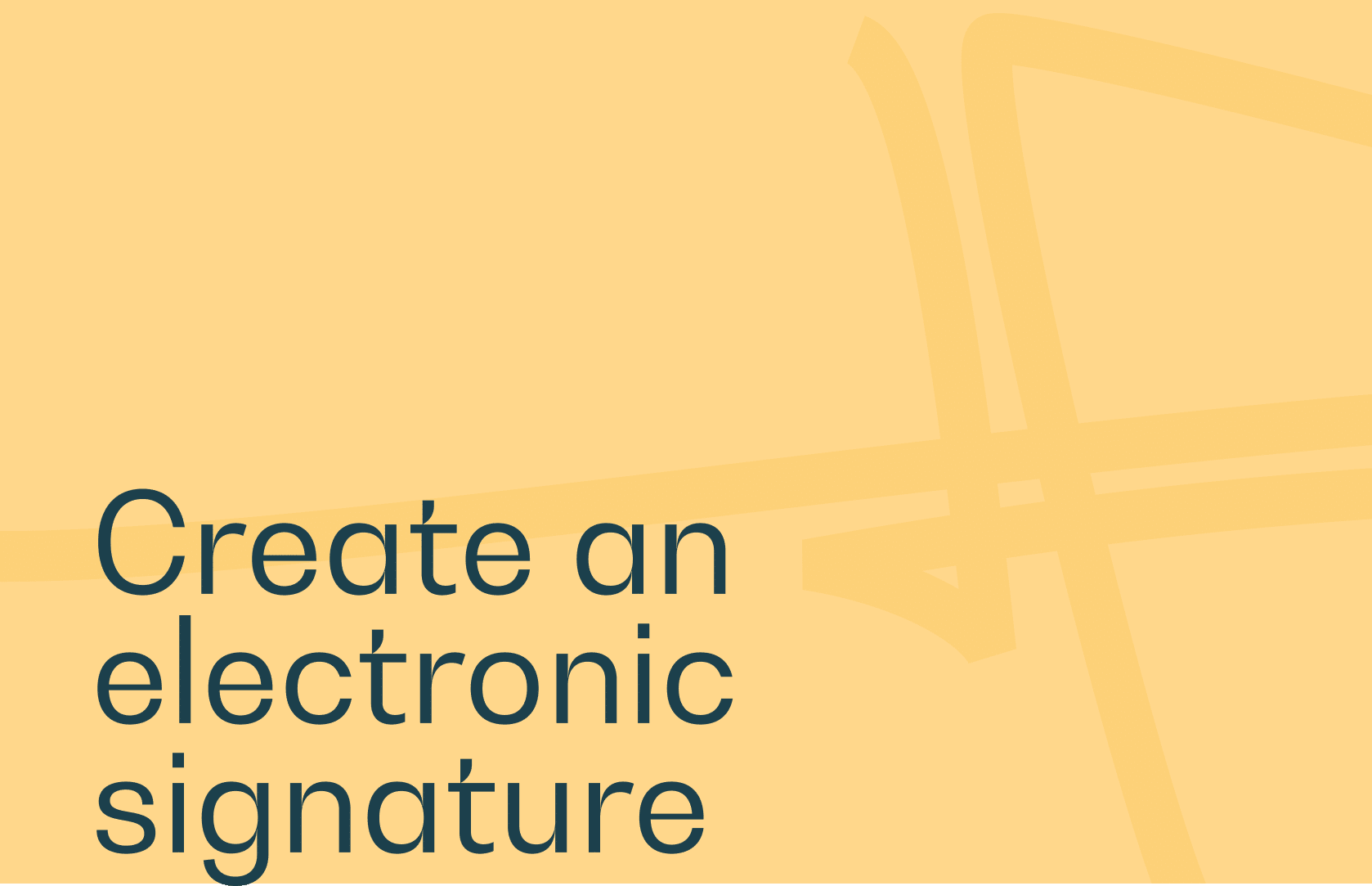In a society where digital technology is absolutely everywhere, every aspect of our daily lives is adopting a new way of operating. And document signing processes are no exception.
For a long time, especially in the corporate world, bringing together signatories to sign important documents was a time-consuming process. Agreeing everyone’s schedules, reserving a large meeting room and all the catering required, preparing the right number of copies with no missing pages, carrying out a joint proofreading process lasting hours before signing – the list goes on and on.
In the digital age, everything has been simplified. Including signatures, with the democratization of what are known as electronic signatures. Here’s everything you need to know about how they work, their level of security and how to create your own digital signature.
Electronic signatures: definition and reliability!
An electronic signature can be defined as a kind of electronic authentication stamp, incorporating encryption of the information it contains. It can be used to certify the identity of signatories, to guarantee the absence of subsequent modification or falsification, or simply to speed up and simplify the process of signing any type of document.
An electronic signature makes it possible to sign a document easily, at any time, from anywhere, and above all in complete security and confidentiality.
Prepare documents for signature
Before creating your electronic signature process, it’s essential to gather the relevant documents. You don’t have to use the same format for all your documents. Whether PDF, Word, Excel, Pages or any other format, they will all be grouped together in a final PDF document.
Draw up a list of signatories
Once you’ve collected all the documents you need to sign, the next step is to draw up a list of signatories. All you need to do is enter their names and e-mail addresses. You can also specify the order in which signatories will be contacted.
Placing signature fields
Before signatories can proceed with signing and validating documents, it is essential to set up signature fields. This will make the signing process much faster and simpler.
Places requiring a signature will be highlighted, and it will even be possible to be taken directly to the signature fields for more confident signatories, or those in a hurry.
These fields are not generic; on the contrary, they can be customized. You can include a classic signature, a signature preceded by a special mention, or any other personalization you wish.
Send electronic signature link to all signatories
Once the contact details of the signatories have been entered, they will receive an e-mail containing a link to the electronic signature process.
To confirm the identity of each signatory, various options are available. Authentication by SMS code or signature by certification are just a few examples.
Open the link in one click and follow the signature tags
Once each signatory has received a link by e-mail, the rest of the electronic signature procedure is just a click away. Indeed, with a simple click, the link received will automatically redirect them to the online signature form.
Once the document has been read, all that’s required is an electronic signature at each marked point. When it comes to electronic signatures, you can draw your own signature, import an image of your signature, or add your name in a given font. The choice is up to each signatory, and does not affect the legal value of the electronic signature.
Last step: validate the document!
Once all the signature fields have been completed, all that remains is to validate the entire document. The final document will then be available for download by all signatories, and will have the same legal value as a lambda–signed document.
Real-time tracking of signatures completed, or not completed
In addition to managing the documents submitted for signature and the list of signatories, the administrator has personal access to real-time monitoring of the process. In other words, he or she can easily see which signatories have validated their documents, and which have not yet done so.
To optimize the electronic signature process, it is also possible to program automatic reminders for signatories who are slow to sign, or notifications to keep the administrator informed of any changes.
What about the legal value of electronic signatures?
Electronic signatures differ from handwritten signatures in a number of ways: digital procedure instead of physical presence, remote identity control, confidential or non-exchangeable documents over the Internet and so on.
There’s no denying that electronic signatures represent a simplified procedure for signing any type of document. However, the fact that they are a simplified procedure does not mean that their value is any less. Quite the contrary, in fact.
Thanks to the European eIDAS regulation, they have the same legal value and enforceability as traditional signatures. This is due in particular to the authenticity certificates and multiple security protocols guaranteeing the link between the identity of the signatory, the signature affixed and the document concerned.




